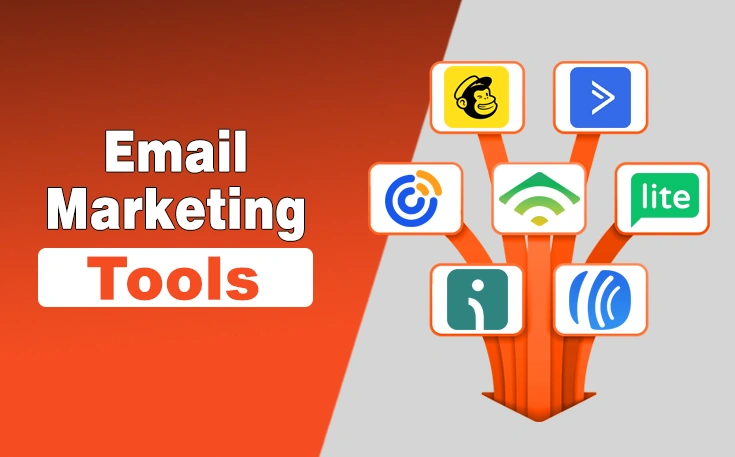When I first started exploring the world of business, one term kept popping up again and again. And that was marketing management. At first, I thought it was just another corporate buzzword, but the deeper I dug into what is marketing management, the more I realized how vital it is to the success of any company.
Whether you are running a small startup or leading a big enterprise, management of marketing procedures is the heartbeat of your business strategy. In this guide, I am going to take you through every essential element of marketing management.
What is Marketing Management?
Marketing management refers to planning, organizing, directing, and controlling marketing resources and activities to achieve organizational goals.
It is not just about selling products. It is about understanding the market, identifying what customers want, and delivering that value better than anyone else.
Marketing Management plays a central role in how businesses attract, convert, and retain customers. Effective management ensures you are not just reacting to market trends but shaping them.
It aligns your product development, pricing, promotion, and distribution strategies to meet customer needs profitably.
What are the Key Functions of Marketing Management?
Marketing management is not just a set of tasks. It is a dynamic cycle of activities that revolve around creating, communicating, and delivering value to customers, while making sure it aligns with your business goals.
Let’s now explore each of these functions in detail. I will share some real-world perspectives, data-driven insights, and practical strategies you can apply even if you are just getting started.
1. Market Research and Analysis
Market research is the process of collecting and analyzing data about your market, your competition, and most importantly, your customers.
Let’s be real. You can’t sell ice in the Arctic, and you shouldn’t try. That’s why everything in marketing starts with one critical question: What do customers actually want? And that’s where market research steps in.
It helps you understand buyer behavior, market trends, product preferences, pricing sensitivity, and more. Suppose you are launching a vegan skincare line. Market research can tell you:
- Which age group is most likely to buy it (e.g., 25–34-year-old women)
- What platforms they spend time on (e.g., 70% active on Instagram)
- What they care about (e.g., cruelty-free, organic ingredients, recyclable packaging)
You can use tools like Google Trends, SurveyMonkey, or SEMrush to conduct both primary and secondary research.
💡Pro Tip
Always validate assumptions with quantitative data (like survey results or keyword search volume) and enrich it with qualitative insights (like customer interviews or focus groups). It combo creates a powerful foundation for your entire marketing strategy.
2. Product Planning and Development
Once you have done the groundwork with research, now comes the fun part, creating the actual product. But don’t fall into the trap of developing something just because you can. Your product has to solve a real problem or fulfill a genuine desire.
Great product planning goes beyond what the business wants to offer. It focuses on what the market actually needs and how you can deliver it better than anyone else.
Let’s take the example of Tesla. Elon Musk didn’t just make electric cars; he made elegant, high-performance electric vehicles with cutting-edge tech, because market research showed that people wanted sustainability without compromising on status or speed.
Key Elements of Product Planning
- Identifying the customer need
- Prototyping and testing
- Iterating based on feedback
- Packaging and positioning
You should use the Minimum Viable Product (MVP) approach. Instead of building the perfect product from day one, launch a basic version quickly and improve it through user feedback. This method was used by Dropbox, which validated its concept with just a demo video and gained thousands of early users.
3. Pricing Strategy
Pricing can make or break your business. Too high, and you scare away potential buyers. Too low, and you eat into your profits or send the wrong signal about quality.
Pricing is not just about covering your costs. It is about communicating value. The price tag tells your customers what to expect. Ever wonder why a Rolex costs more than a Seiko, even though both tell time? It is all about perceived value.
Common Pricing Strategies
- Cost-Plus Pricing: Add a markup to your cost
- Value-Based Pricing: Price based on the benefit to the customer
- Competitive Pricing: Price according to what others in the market are charging
- Psychological Pricing: Like pricing at $199 instead of $200 to make it feel cheaper
According to Harvard Business Review, a 1% improvement in price leads to an 11.1% increase in operating profit, more than cost or sales volume changes.
💡Pro Tip
Use tools like ProfitWell, Price Intelligently, or Google Shopping Insights to analyze market pricing. And don’t forget to test! A/B test your pricing just like you would with ads.
4. Promotion and Communication
This is where most people jump straight in. Facebook ads, TV commercials, influencer marketing, and all that jazz. But good promotion starts with a message, not with a platform.
Promotion is about telling your brand story, not just making noise. It should answer a simple question: Why should the customer care?
Here is a real-world stat for you: People see up to 10,000 advertisements per day, but they remember less than 10 of them. So the goal is not to scream louder; it’s to speak clearly and meaningfully.
Channels of Promotion:
- Paid media: Google Ads, Meta Ads, LinkedIn Ads
- Earned media: Press coverage, influencer mentions, PR
- Owned media: Your website, blog, email list, social pages
- Personal Selling: For B2B or high-ticket sales, direct conversations work best
One thing I always recommend is focusing on multi-channel communication. For example, when launching a new product, you can:
- Send a teaser via email
- Post countdown stories on Instagram
- Use influencer shoutouts on YouTube
- Run Google Display Ads to retarget past visitors
5. Distribution and Placement
Let’s imagine you have nailed your product, priced it smartly, and promoted it perfectly. Now, what if your customers can’t find it easily? That’s why distribution matters – big time.
This function is all about ensuring that your product reaches the right customer at the right time and in the right condition. If you sell physical products, this could mean partnering with retailers, eCommerce platforms, or logistics companies. If you sell digital products, it could be about selecting the right marketplace or delivery method.
Distribution Channels:
- Direct: Your own website or store
- Indirect: Retailers, wholesalers, online marketplaces
- Hybrid: A mix of both
For example, Nike uses both direct (Nike.com, Nike app, flagship stores) and indirect (Foot Locker, Amazon) channels to maximize reach.
💡Pro Tip
Make sure your distribution strategy matches your customer journey. If your audience shops mostly on mobile, your mobile site and checkout process need to be seamless.
6. Monitoring and Controlling
You can’t improve what you don’t measure. And marketing is not a one-time push. It is an ongoing cycle of testing, learning, and optimizing.
This function is about tracking how well your marketing activities are performing and making adjustments based on actual data. It helps you reduce wasted spend, improve ROI, and make smarter decisions going forward.
Key Metrics to Monitor:
- Customer Acquisition Cost (CAC)
- Return on Ad Spend (ROAS)
- Click-Through Rate (CTR)
- Conversion Rate
- Customer Lifetime Value (CLV)
Let’s say you are running an Instagram campaign. You need to know:
- How many people saw it?
- How many clicked?
- How many bought?
- Was it worth the money you spent?
Tools like Google Analytics, Hotjar, HubSpot, and Meta Ads Manager can help you collect and analyze this data.
💡<strong>A Bonus Tip from WebTech Solutions:</strong>
Set up a monthly marketing review dashboard. I use a simple one on Google Data Studio with KPIs, trends, and next steps. It helps you stay focused and accountable.
How Does Marketing Management Work?
Understanding the steps involved in executing a marketing strategy will help you appreciate how strategic this field really is. In the under section, I have enlisted how the complete management procedure works.
- Situation Analysis: It involves analyzing both internal and external environments. Think of it as a check-up to see where your brand currently stands.
- Setting Marketing Objectives: Here, goals are defined. These can be about increasing brand awareness, boosting sales, or expanding into new markets.
- Strategy Formulation: It is the roadmap to achieve your goals. It includes choosing target markets, positioning strategies, and deciding on the marketing mix.
- Implementation: Now it’s time to execute the plan. It involves coordinating teams, managing resources, and rolling out campaigns.
- Evaluation and Control: After the execution, you analyze the results to see what worked and what didn’t. Then you refine and repeat.
Core Concepts of Marketing Management Every Marketer Should Know
If you want to become an effective marketer or marketing manager, there are the core building blocks you must understand. I like to think of them as the grammar of marketing. You can’t construct a strong message unless you have mastered the basics.
These concepts are not just theory. They are actively used by the world’s top brands to shape everything from product launches to customer service strategies. Let me walk you through them with clear examples and real-world relevance.
1. The Marketing Mix (4Ps and 7Ps)
It is one of the first models I learned in marketing, and I still use it today. It is timeless because it covers the entire journey from product creation to customer delivery.
What are the 4Ps?
Originally introduced by E. Jerome McCarthy in the 1960s, the 4Ps of marketing are:
- Product: What are you offering? A physical product? A digital service? Think Apple’s iPhone, or Netflix’s streaming service.
- Price: How much will it cost? Are you positioning it as premium, mid-tier, or affordable?
- Place: Where will customers find it? Online? Retail stores? A mix of both?
- Promotion: How will you tell the world about it? Advertising, email, social media, influencers?
This framework is still the go-to strategy tool for product-based businesses.
Expanding to 7Ps for Services
When marketing services, three additional Ps come into play:
- People: This includes staff, customer service reps, and anyone who interacts with the customer. For example, Starbucks trains its baristas to offer not just coffee, but a consistent customer experience.
- Process: How is the service delivered? For example, Amazon’s 1-click checkout or Uber’s ride-matching algorithm are both process-driven advantages.
- Physical Evidence: Tangible proof of quality. Think branded packaging, invoices, or even the ambiance of a hotel lobby.
Why It Still Matters?
According to a Harvard Business School study, businesses that regularly revisit their marketing mix are better able to adapt to changing customer demands and stay relevant in competitive markets.
Brands like Coca-Cola and Nike have remained market leaders for decades by consistently optimizing their 7Ps.
2. Market Segmentation
Segmentation means dividing your audience into smaller groups that share common traits, so you can customize your marketing efforts more precisely.
One size fits all marketing is dead. If you are still broadcasting generic messages, you’re missing out. That’s why market segmentation is one of the most powerful concepts in marketing.
There are four major types of segmentation:
- Demographic: Age, gender, income, education. For example, a luxury watch brand may target males aged 30–50 with high disposable income.
- Psychographic: Lifestyle, personality, values, such as a vegan food brand may target environmentally conscious millennials.
- Behavioral: Purchase history, loyalty, product usage, like a SaaS company might target power users differently than new users.
- Geographic: Location-based targeting, like a clothing brand might market jackets in Canada and swimwear in Brazil.
Why Segmentation Works?
Segmentation boosts efficiency. Instead of wasting resources on broad messages, you can deliver laser-focused campaigns. According to Mailchimp, segmented email campaigns result in 14.31% higher open rates and 100.95% higher click-through rates than non-segmented ones.
Real-World Example
Netflix uses behavioral and demographic segmentation to recommend shows based on what users have watched and liked. That’s why two people on the same platform see completely different home screens and both stay engaged.
3. Targeting and Positioning
Once you have segmented your audience, the next step is to decide whom to focus on and how to present your brand to that audience.
Let me break this down into two parts:
a. Targeting
Targeting means selecting one or more segments to serve. You can’t and shouldn’t try to appeal to everyone.
There are several types of targeting strategies:
- Undifferentiated Targeting: One message for all (Government public health campaigns)
- Differentiated Targeting: Different messages for different segments (Toyota has budget, mid-range, and luxury offerings)
- Concentrated Targeting: Focusing on one niche (Rolex targets high-income luxury buyers)
- Micromarketing: Hyper-local or individual targeting (Personalized Spotify playlists)
b. Positioning
Positioning involves crafting a unique value proposition and consistently communicating it through messaging, visuals, tone, and even pricing.
Now that you have chosen your audience, you need to answer one crucial question: How do you want your brand to be perceived in their minds?
Framework – The Positioning Statement
A great way to clarify your positioning is with this simple template:
For [target market], [brand] is the [category] that [key benefit], unlike [competitor], which [point of differentiation].
- Example (Nike): For active individuals, Nike is the sportswear brand that inspires achievement, unlike generic brands, which only sell products.
Real-World Insight
According to Nielsen, 59% of global consumers prefer to buy new products from brands they’re already familiar with – which is a direct result of strong, consistent positioning.
What are the Key Marketing Management Strategies?
In the under section, I have listed some points that highlight the various strategic approaches marketing managers can take to achieve business goals. Each strategy aligns with the broader company vision.
- Growth Strategies: Marketing can help a business grow using methods like market penetration, product development, market development, and diversification.
- Branding Strategy: Strong brands don’t happen by accident. A branding strategy defines how you present your identity, values, and promise to the market consistently.
- Content Marketing Strategy: Content marketing involves creating valuable content to educate and engage your audience rather than directly selling. I love this approach because it builds trust over time.
- Digital Marketing Strategy: It is all about using digital channels like search engines, email, and social media platforms to reach your audience effectively.
- Relationship Marketing: Instead of focusing only on new customers, relationship marketing emphasizes building long-term relationships with existing ones. It leads to higher customer retention and loyalty.
Skills Required for Effective Marketing Management
A great marketing manager needs more than textbook knowledge. The role demands a unique blend of skills that combine creativity, analysis, and leadership.
- Analytical Thinking: Marketing decisions must be backed by data. Analytical skills help you interpret metrics and adjust your strategies accordingly.
- Creativity and Innovation: You must be able to think outside the box, especially when your message needs to cut through the noise.
- Communication Skills: From writing compelling copy to pitching ideas to your team, communication is at the core of successful marketing.
- Strategic Thinking: Good marketing managers always think long-term. You need to understand how today’s actions affect tomorrow’s results.
- Leadership and Teamwork: You will often be working with designers, writers, developers, and sales teams. Knowing how to lead and collaborate is key.
How to Get Started in Marketing Management?
If the marketing management field excites you and you are wondering how to step into it, here is my personal advice.
- Educational Background: A degree in business, marketing, or communications gives you a strong foundation.
- Certifications: Short courses and certifications like Google Ads, HubSpot Inbound, or Digital Marketing from Meta can boost your skills quickly.
- Internships and Real-World Projects: Nothing beats hands-on experience. Try internships, freelancing, or even volunteering for local businesses.
- Stay Updated: Marketing is dynamic. Read blogs, follow influencers, and stay connected with industry news.
Final Thoughts
Marketing management is more than a business function. It is an ever-evolving field that sits at the intersection of art, science, and psychology. Whether you are a student, a business owner, or just someone curious about how brands grow, understanding marketing management equips you with tools that are relevant across industries.
As you dig deeper into this subject, you will see that it is not just about selling but about connecting, solving problems, and creating value. So, if you are ready to shape the future of brands and influence markets, marketing management might just be your calling.
Need custom app with amazing features?
Get a Quote




